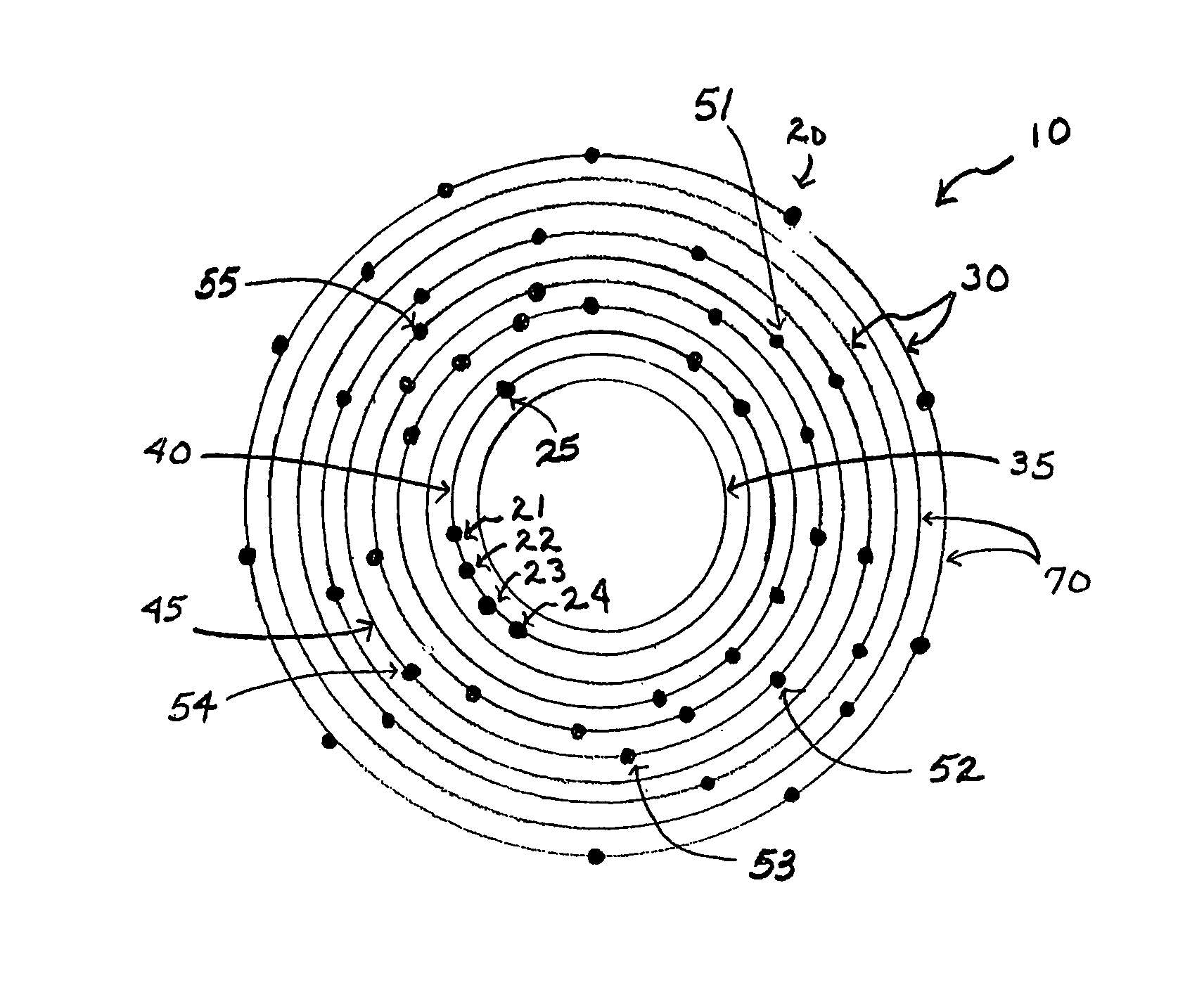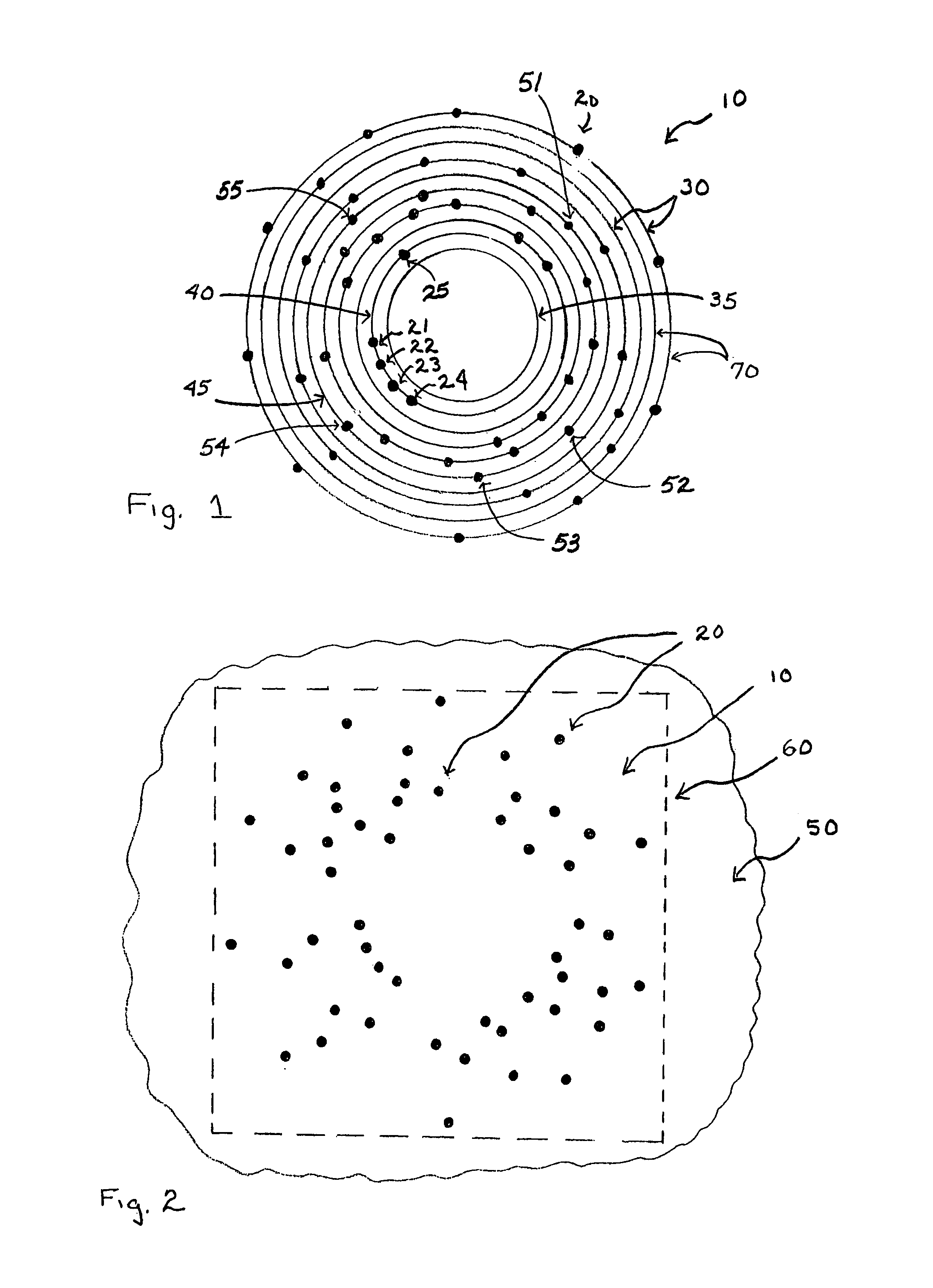Data encoding mark for placement in a compact area and an object carrying the data encoding mark
a data encoder and compact technology, applied in the field of data encoders for placement in compact areas, can solve the problems of limiting the space in which bar codes can fit, affecting the recognition speed of objects, so as to reduce the handling of objects and accelerate the recognition speed
- Summary
- Abstract
- Description
- Claims
- Application Information
AI Technical Summary
Benefits of technology
Problems solved by technology
Method used
Image
Examples
Embodiment Construction
The Encoding Mark
[0028]As seen in FIGS. 1-4, the machine-readable encoding mark 10 in accordance with the present invention includes a series of substantially concentric shapes 30 and distinctive markings 20, placed on the perimeter 70 of concentric shapes 30. Concentric shapes means that the shapes have a common center. In a preferred embodiment, dots (filled-in circles) are placed substantially on the perimeter of concentric circles. Preferably, the distinctive markings may be of a color that provides sufficient contrast to the surface of the object, so that any reading device may obtain a distinct image of the encoding mark. It is conceivable that the object may be marked with concentric shapes which also may be of any color including matching the distinctive markings. Preferably, the concentric shapes will also have a high contrast to the surface of the object and the distinctive marks. The size of the distinctive marks is only limited by the device placing the mark and the opti...
PUM
 Login to View More
Login to View More Abstract
Description
Claims
Application Information
 Login to View More
Login to View More - R&D
- Intellectual Property
- Life Sciences
- Materials
- Tech Scout
- Unparalleled Data Quality
- Higher Quality Content
- 60% Fewer Hallucinations
Browse by: Latest US Patents, China's latest patents, Technical Efficacy Thesaurus, Application Domain, Technology Topic, Popular Technical Reports.
© 2025 PatSnap. All rights reserved.Legal|Privacy policy|Modern Slavery Act Transparency Statement|Sitemap|About US| Contact US: help@patsnap.com



